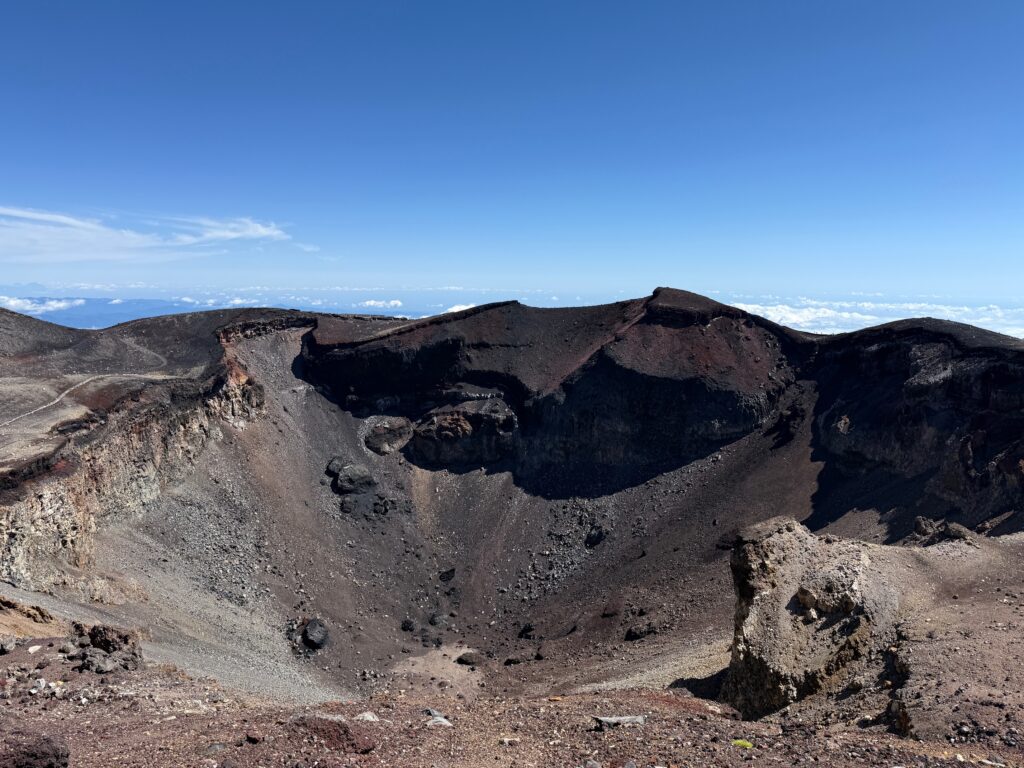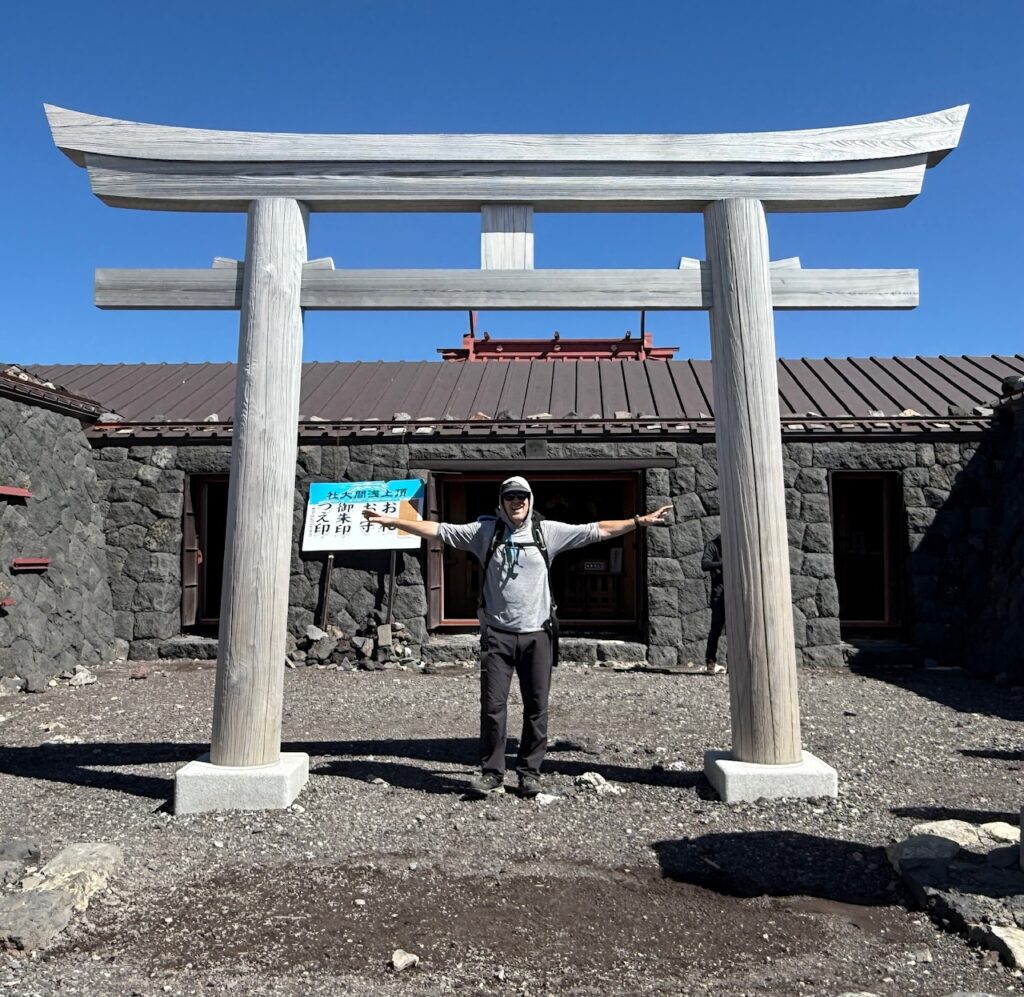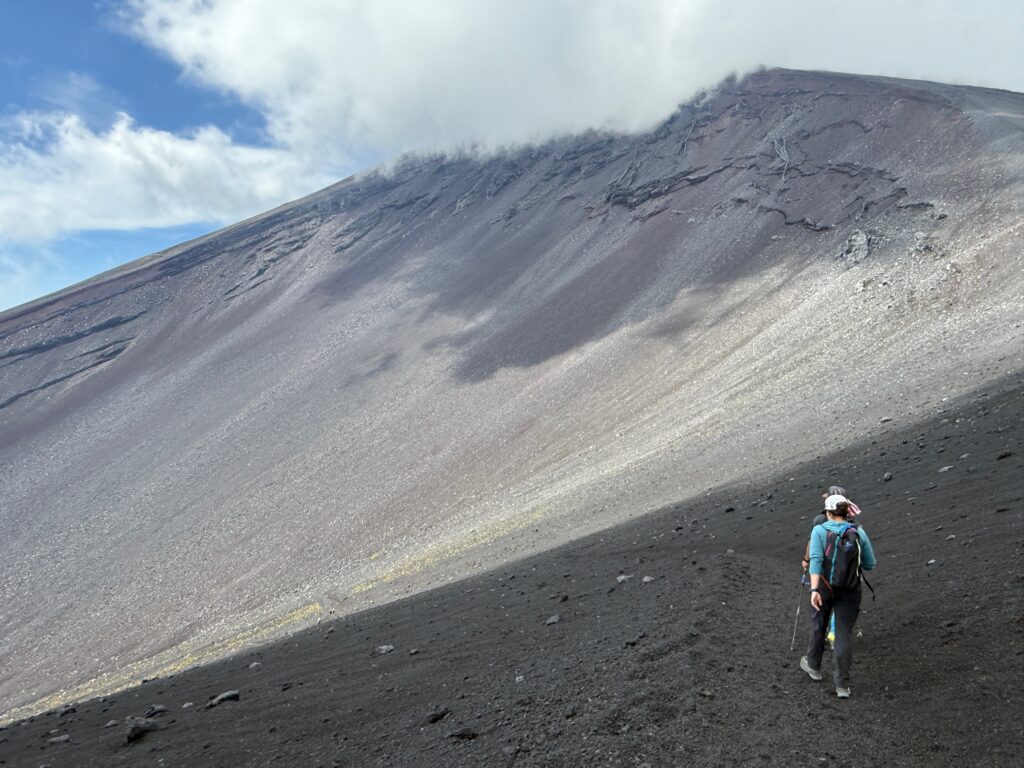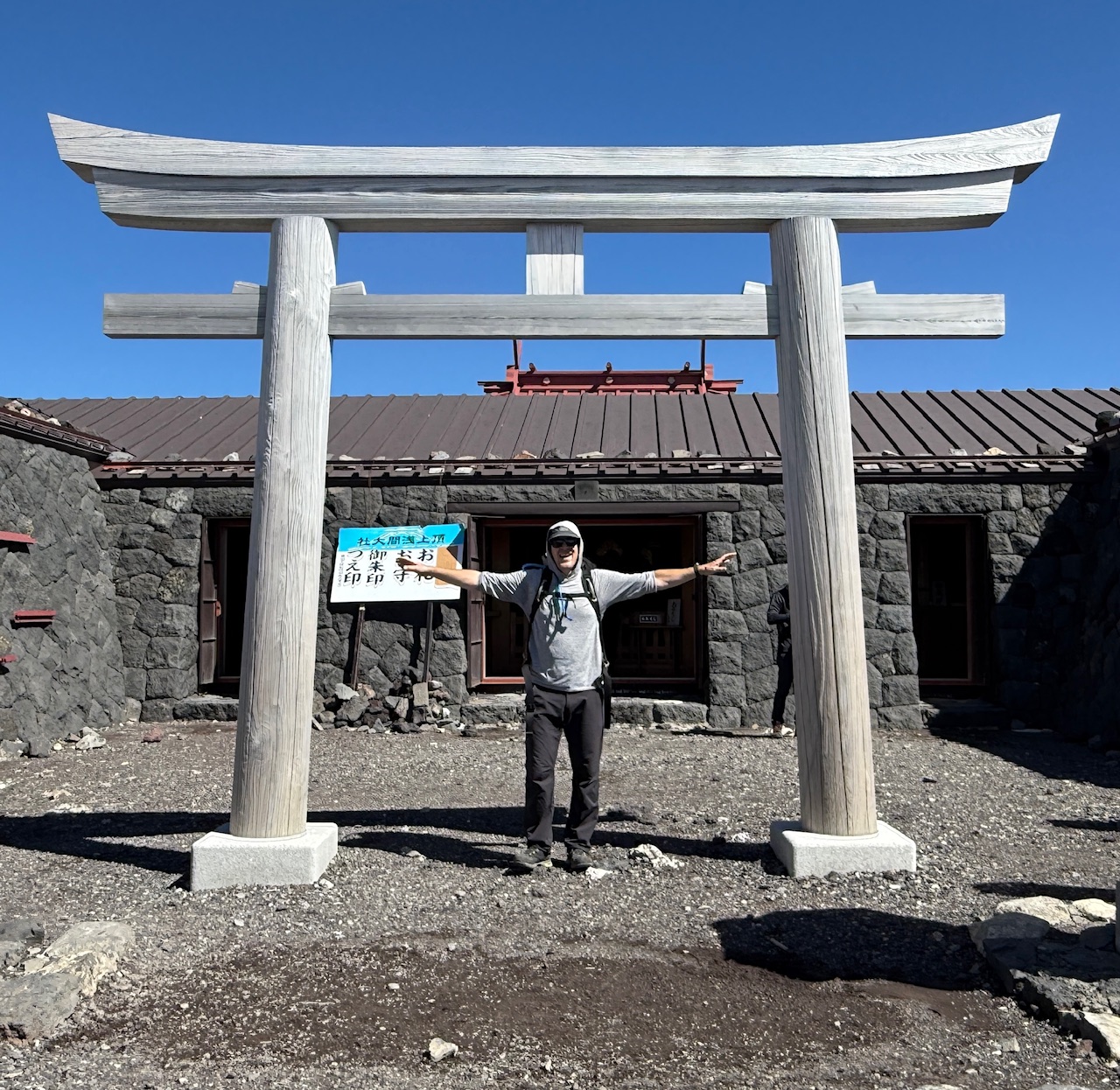Climbing Mount Fuji, Japan’s highest peak at 12,388 feet (3,776m), is one of the most iconic trekking experiences in the world. Each year, hundreds of thousands of people set out to conquer this perfectly shaped volcano, and while it is a non-technical climb, preparation makes all the difference between a memorable adventure and a difficult struggle.
Whether you’re planning a longer trekking adventure or a 2-day Mount Fuji climb or joining a guided tour, here are the top tips to help you make the most of your journey. Check out our upcoming trips.

1). Choose the Right Season
The official climbing season on Mount Fuji runs from early July to early September. This is when trails are open, mountain huts are operating, and the weather is generally more stable. There is a off season option between the second week in September to Mid October.
We have to change up our preferred route to climb Fuji in this post climbing season. Early season trips is highly discouraged due to extreme conditions, snow, and lack of services.
2). Pick the Best Route for You
Mount Fuji has four main trails: Yoshida, Fujinomiya, Subashiri, and Gotemba. The Yoshida Trail is the most popular, with many huts and facilities, while the Fujinomiya Trail is the shortest route to the summit. Subashiri and Gotemba are less crowded but longer.
Researching the routes before you go will ensure you choose the one that best matches your fitness and trekking style. We prefer to ascend starting on the Fujinomiya into the Gotemba route. I think this offers the best experience for a Mount Fuji ascent and descent.
3). Plan for Altitude
At nearly 12,500 feet or 3,800m, altitude sickness is a real risk on Mount Fuji, especially as you will be coming from Sea level. To reduce the chance of symptoms, break the climb into two days and sleep at a hut around 9,842 feet (3,000m) or the 7th or 8th station. Ascend slowly, stay hydrated, and give your body time to adapt. Previous training is needed to be safe and successful on Mount Fuji.
You should consider taking ibuprofen to aid sleep and approaching the summit. Do not dwell high on the mountain for too long and descent back to the hut within a few hours of standing on the summit to reduce the risks.

4). Pack Proper Gear
Weather on Mount Fuji changes quickly, and temperatures near the summit can be below freezing, even in summer. Pack layered clothing, a waterproof jacket, gloves, sturdy boots, down jacket, trekking poles, snacks, headlamp, and plenty of water. Being properly equipped will make your climb far more enjoyable. We will send you an itemized packing list so you will know exactly what to bring.
5). Don’t Miss the Sunrise
The sunrise from Mount Fuji, called Goraiko, is a magical moment and a highlight for most climbers. If you want to experience it from the summit, plan your trek with an overnight hut stay and begin your final ascent in the early hours. Alternatively, watching the sunrise from one of the higher stations can be just as spectacular and less crowded.
6). Book Mountain Huts in Advance
During peak season, mountain huts sell out quickly. If you’re doing a 2-day Mount Fuji trek, secure your booking early. We like to book our spaces six months before the start of our trips. These huts offer a place to rest, meals, and basic shelter. This can make the difference between a tough climb and an enjoyable one.

7). Respect the Mountain
Mount Fuji is not only a natural wonder but also a sacred symbol in Japanese culture. Help preserve its beauty by carrying out all trash, staying on marked trails, and respecting local customs.
8). Training for Mount Fuji: Fitness and Training Guide
Climbing Mount Fuji in Japan is a challenging and unforgettable adventure. At 3,776m, Fuji’s steep cone shape, rapid elevation gain, and unpredictable weather make it far more demanding than a typical hike. The climb requires preparation, as temperatures can drop up to 60°F (15°C) from base to summit.
To succeed, fitness and training are essential. A balanced program should include:
- Cardiovascular training – running, cycling, hiking with a weighted backpack, or stair climbing 3–4 times per week for 30–60 minutes to build stamina.
- Strength training – focus on legs, hips, core, shoulders, and back with exercises like squats, lunges, overhead press, and core twists. This builds endurance for steep inclines and carrying a pack.
- Climb-specific conditioning – practice hill walking, trail hiking, or stair workouts building up to 7–10kg (15–20 lbs) in your backpack to simulate Fuji’s elevation gain.
- Acclimatization awareness – altitude affects everyone differently. Expect breathlessness, fatigue, and appetite changes. Hydrate well, eat balanced slow-release carbs, and pace yourself.
With the right mix of cardiovascular fitness, strength, and altitude awareness, you can make your Mt. Fuji climb safer, more enjoyable, and truly unforgettable.

Frequently Asked Questions About Climbing Mount Fuji
1). How hard is it to climb Mount Fuji?
Climbing Mount Fuji is considered a strenuous trek rather than a technical climb. The trails are well-marked, but the steep inclines, loose volcanic gravel, and high altitude make it physically challenging. With proper preparation and a 2-day itinerary, most reasonably fit trekkers can reach the summit.
2). How long does it take to climb Mount Fuji?
Most people complete a Mount Fuji climb in 2 days. We like to have a more complete trekking in Japan experience, where we add in the second highest volcano in Japan, Mount Ontake 10,062 feet. We also adding some hiking on the Nakasendo trail before going to Mount Fuji. If you pick the two day climbing option, the first day is spent hiking to a mountain hut at either 9,842 feet or 10,827 feet. You will be able to rest before making the final push to the summit in the early morning. A one-day ascent is possible but very demanding and increases the risk of altitude sickness.
3). What is the best time to climb Mount Fuji?
The official climbing season runs from early July to early September. This is the safest and most enjoyable time to climb, with open trails, operating mountain huts, and milder weather. Outside this window, conditions are extremely hazardous due to snow, ice, and strong winds.
4). Do you need a guide to climb Mount Fuji?
It’s possible to climb Mount Fuji independently since the trails are clearly marked and well-traveled during the season. However, many trekkers prefer joining a guided Mount Fuji tour for added safety, cultural insight, and the convenience of having logistics such as hut reservations and transportation arranged.
5). What should I pack for climbing Mount Fuji?
Essential items include layered clothing for cold temperatures, waterproof jacket and pants, sturdy trekking boots, gloves, headlamp, trekking poles, snacks, and plenty of water. A small first-aid kit and cash for mountain huts and facilities are also recommended. We will send you an itemized kit list.
6). Can you see the sunrise without reaching the summit?
Yes! While many climbers aim for the summit sunrise (known as Goraiko), the views from the 7th or 8th station can be just as stunning and far less crowded. This can also help if you’re struggling with altitude or want a more relaxed experience.
7). Is altitude sickness common on Mount Fuji?
Yes. At 12,388 feet (3,776m), the altitude can cause symptoms like headaches, dizziness, and nausea. The best way to avoid altitude sickness is to ascend slowly, climb over 2 days, stay hydrated, bring Ibuprofen and rest at a hut before attempting the summit.

Final Thoughts
Climbing Mount Fuji is an achievable goal for many trekkers, but success comes from preparation and respect for the mountain. By choosing the right season, acclimatizing properly, packing the right gear, and planning your route in advance, you’ll give yourself the best chance to enjoy one of the most iconic trekking experiences in the world.
Whether you’re chasing the sunrise from the summit or exploring Japan’s other trekking trails, a Mount Fuji climb will leave you with memories to last a lifetime. Contact us for more information on climbing Mount Fuji.
